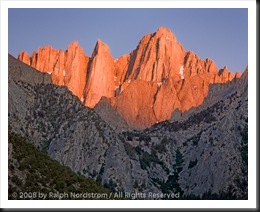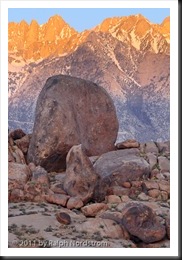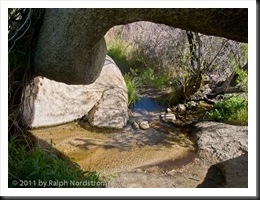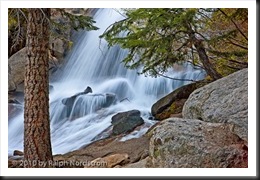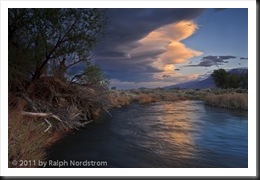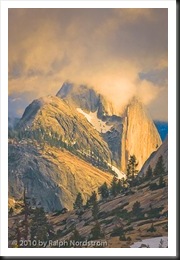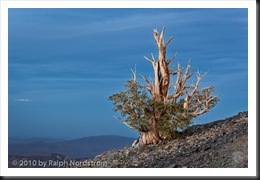I don’t know where you’ll find a more spectacular range of mountains than the eastern edge of the mighty Sierra Nevada Mountains. This is where the gargantuan slab of granite from which the mountain range is formed plunges precipitously from the peaks along the crest into the Owens Valley below. Driving up the Valley on legendary highway US 395 is likely to give you a crick in your neck. Because you can’t take your eyes off the endless procession of towering summits.
I’ve camped and backpacked in these mountains since I was a young boy and I always love returning to them. And now that I come back with camera in hand I have an opportunity to capture and share with you the inspiration I receive here.
|
Mt Whitney
|
Mt Williamson
|
Mt Whitney is the tallest peak in the lower 48 and from your vantage point in the valley below it towers more than two vertical miles above your head. It’s nothing short of breathtaking in the morning sun.
But there’s more to the Eastern Sierra than the grandeur of these mighty peaks. Come with me on a journey as I show you the superlative and the sublime.
We’ll begin our tour in the little town of Lone Pine to the south. From the center of town you can clearly see Mt Whitney. But you also plainly see that there is a large range of hills between the town and the main Sierra range. These are the beloved Alabama Hills, home to more surprises and delights than you can imagine.
Over the decades these hills have been the location of countless movies, commercials, fashion shoots and more. In fact, the main road through the hills is named Movie Road.
But the hills offer a lot more than Hollywood glamour. There are vistas both magnificent and intimate.
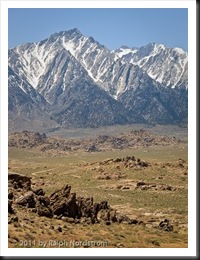
Lone Pine Peak
|
Mt Whitney and Skull Rock
|
One of the big surprises in these hills are the arches carved from the granite boulders.
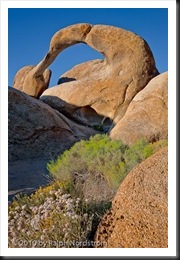
Mobius Arch
|
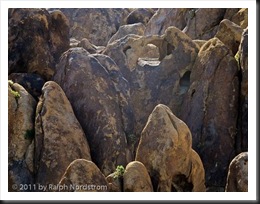
Gunga Din Arch
|
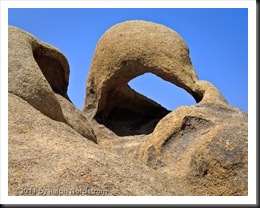
Unknown Arch
|
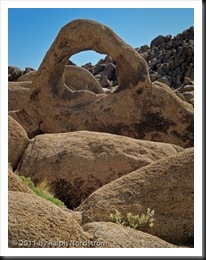
Whitney Portal Arch
|
Why, there’s even an arch with a stream flowing under it. Now how did that happen?
Natural Bridge
When it gets hot in the valley as it tends to do in summer you can always escape the heat by heading up into the mountains. In the shadow of Mt Whitney is Whitney Portal, the end of the road and the trailhead for the southern terminus of the John Muir Trail.
Cascading down the mountain side is Lone Pine Creek, a cool refreshing escape from the dry heat below.
Lone Pine Creak
When we leave Lone Pine and head north we pass through historic towns like Independence and Big Pine. Each has their own renowned gateway into the Sierra – Onion Valley and Kearsarge Pass, the Palisades and Bishop Pass and more.
We continue north and enter Bishop, the ‘metropolis’ of the Eastern Sierra. To the west is the drainage of Bishop Creek and the lakes from which it flows To the east are the White Mountains, nearly as tall as the Sierra.
But there are also many sublime scenes around Bishop.
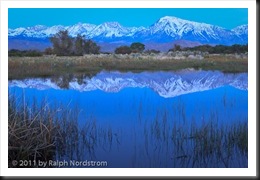
Farmer’s Pond and Mt Tom at Dawn
|
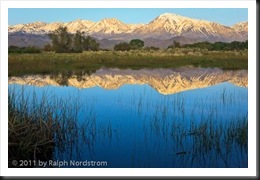
Farmer’s Pond and Mt Tom First Light
|
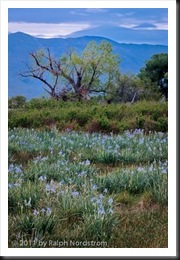
Field of Irises
|

Iris
|
One cannot ignore the Owens River that runs the length of the Owens Valley and provides water for the towns, farms and ranches along its banks and for a thirsty Los Angeles 250 miles away.
Owens River
Continuing north past Mammoth Lakes and the June Lake loop we arrive at an inland wonder, the enormous land locked Mono Lake. Before historical times it used to fill the entire valley but now it has shrunk to a small fraction of its former size. It is saltier than the ocean and as a result has given birth to strange formations when they were still underwater – the mysterious and endlessly fascinating tufa towers.
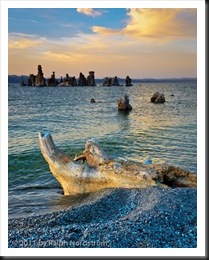
Mono Lake
|
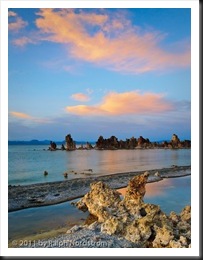
Mono Lake
|
Mono Lake
Above Mono Lake to the west is Tioga Pass and the entrance to Yosemite National Park. When the road is open (it’s closed for the winter snows) I like to head up to Tuolumne Meadows and Olmsted Point. If you’re lucky enough to catch a passing storm the photography can be unbelievable.
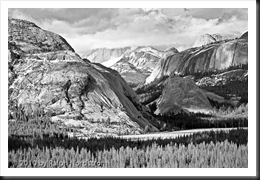
Tanaya Lake
|
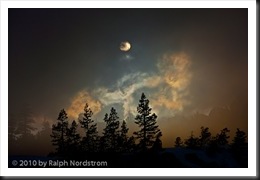
Sierra Storm
|
Half Dome
As beautiful as all of this is, my favorite and most inspiring place in the Eastern Sierra is not technically in the Eastern Sierra at all but rather in the White Mountains across the way. Tucked away at high altitudes and in soil that is poisonous to most other trees grow one of the most amazing wonders on the planet – the ancient bristlecone pine. Some of the trees that we can see and touch today were seedlings long before the Egyptians started building their pyramids. The oldest living tree is measured at more than 4700 years old. No other tree lives as long as these stunning specimens. I am always reduced to humble silence in their presence.
My thoughts turn to them even when I’m in the lowlands. I think of human emperors and the empires they built that have been brief flashes of light in these trees’ lifetimes. I think of centuries of coyotes that have wandered by oblivious to their abiding presence, maybe even lifting a leg to scent them. I think of how many times the full moon must have risen behind them and how many starry nights they have witnessed, of how many icy storms that have lashed them, blistering summer suns and the periods of drought and plenty. And still, here they stand for us to behold in reverent awe.
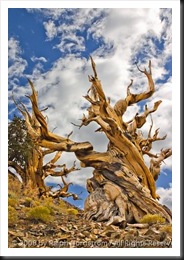 |
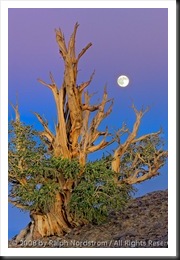 |
I hope that from this brief tour you can gain a sense of how exciting this diverse area is and why I’m always so eager to return there. Now it’s more than just the memories of the high mountain passes I’ve climbed or the peaks I’ve stood atop. It’s more than the memory of camping beside alpine meadows bursting with flowers and traversed by trout filled streams. It’s more than memories of a tiny dome of light created by our cooking fire in a fast dark forest at night. Now it’s the exhilaration and challenge of capturing this wondrous place and these priceless moments to share with you.
Thank you for going on this journey with me. I hope to see you out there sometime soon.
(1793)

